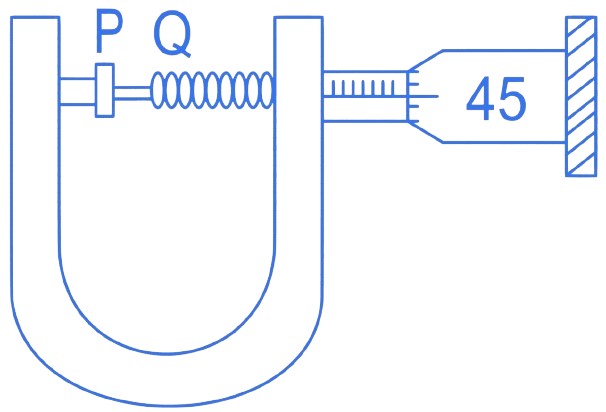Correct answer is (A)
In this experiment, the vernier callipers have a least count of 0.1 mm, which is equal to 0.01 cm.
First, let's calculate the zero error since the zero of the vernier scale does not coincide with the zero of the main scale when the two jaws are joined together. The zero error can be found using the formula:
Zero Error = (Number of divisions coinciding) × Least Count
Zero Error = 6 × 0.01 cm = 0.06 cm
Since the zero of the vernier scale lies to the right of the main scale zero, the zero error is positive.
Now, let's find the main scale reading (MSR) when measuring the diameter of the spherical bob. The MSR is the value just before the zero of the vernier scale, which is 3.2 cm in this case.
Next, let's find the vernier scale reading (VSR) when measuring the diameter. The VSR is the product of the coinciding division number and the least count:
VSR = (Number of divisions coinciding) × Least Count
VSR = 4 × 0.01 cm = 0.04 cm
Now, we can find the total reading, which is the sum of the MSR and VSR:
Total Reading = MSR + VSR = 3.2 cm + 0.04 cm = 3.24 cm
Since there is a positive zero error, we need to subtract it from the total reading to get the corrected diameter:
Corrected Diameter = Total Reading - Zero Error = 3.24 cm - 0.06 cm = 3.18 cm
So, the diameter of the bob is measured as 3.18 cm.
